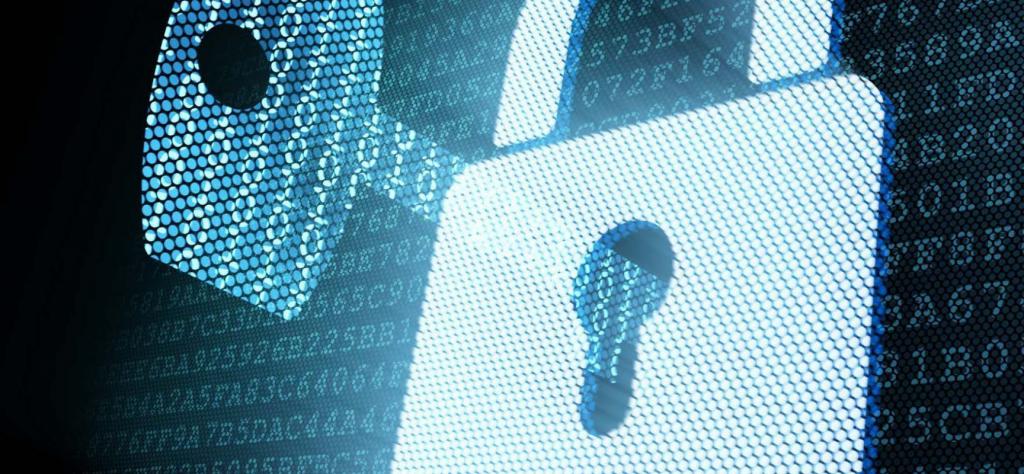The beauty of modern technology of our century is that they not only simplify life, but also make it cybersafe. Not so long ago appeared an electronic digital signature (EDS). The document takes on an electronic form, signed using an electronic digital signature, namely, a signature obtained as a result of being converted by cryptographic means of a set of electronic data. Not so long ago, the law of the Russian Federation “On electronic signatures” introduced a reduction of the abbreviation EDS to EDS - an electronic signature that is rendered not using a graphic image, but through mathematical transformation. This ensures that the signature is original, the document is officially signed and has full legal force in accordance with the legislation of the Russian Federation.
The user of the signature has its own private key, which is used when generating the signature. In addition to the corresponding secret private key, there is a public key, which is published for all users of the electronic signature system as a guarantee of the original signature of the signatory.
What are the types of electronic digital signature (EDS)
During this period, several types of electronic signatures are used. The first is a simple signature, and a more advanced version is a reinforced one. Strengthened, in addition to the basic functions, ensures that the document has not been changed since its signing and has the same strength as paper.

Simple electronic signature
This is a simple code that confirms the identity of the owner for a certain type of documents, permitted by this electronic type of digital signature. It is made out by entering the login and password in the program or on the device. This type of digital signature is convenient as an identifier for user data. If an electronic signature is issued by a corporation, then the user will be tied to a specific organization that issues this electronic signature to him. This means that the use of electronic signature will be limited to the company that issued the signature.
Enhanced Unskilled Electronic Signature
The signature contains cryptographic algorithms that protect documents. An enhanced unskilled electronic signature is encrypted using two types of keys: public and private. The private key is located with the owner on a specific medium, protected by a PIN code (PC, flash media). The public key is associated with the private key, it is necessary when verifying the authenticity of the electronic signature and will be available to users with whom the owner of this type of digital signature conducts electronic document management. Keys are issued at accredited centers with the personal presence of the signatory, this makes it possible to identify the user and prove that the information provided by the signatory in the document file is unchanged. This type of signature is suitable for internal document circulation of the company, for working on the website of the Federal Tax Service and performing certain operations on it. There is also the possibility of sending or exchanging electronic documents between companies, but in this case, an agreement of the parties is needed to recognize the electronic signature. An enhanced unqualified electronic signature is required to participate in electronic public procurement as a supplier. Legal entities can order an enhanced unqualified EP for a fee at an accredited center. Individuals can register this type of EDS for free using their personal account on the website of the Federal Tax Service.

Enhanced Qualified Electronic Signature
Perhaps this is the most regulated type of signature in the Russian Federation. Like unqualified ES, cryptographic algorithms are used in protection and there are 2 keys: private and public.In a qualified EP, 2 types of certificate are issued - in paper and in electronic form. The acquisition of a qualified electronic signature is possible only if the signatory visits the accredited center personally, which guarantees the authenticity of the signature. The software is certified by the FSB of Russia. The functions of an enhanced qualified signature are similar to the functions of an unskilled digital signature. With it, it is possible to submit any reports to government services, workflow, it certifies any legal and financial transactions. This type of digital signature has full legal force.

Electronic Signature Capabilities
For electronic documents signed by digital signatures, many convenient functions of use are opened. An electronic signature for individuals is a way to speed up and simplify interaction with government agencies, employers, medical and educational institutions via the Internet.
Electronic bidding is an online trading platform where suppliers of goods or services post their offers. Participants have the opportunity to access both state and commercial offers. EP accelerates the registration and accreditation process on the trading floor.
Electronic document management is the exchange of documents or contracts, which is carried out through a specialized electronic system and the Internet. This document management system is actively used by all types of companies, both small and large businesses. This is convenient when exchanging primary accounting documents (accounts, acts, invoices) between the customer and the supplier, for sending reports to the tax service, the pension fund.
Electronic reporting is a convenient, fast and economical option for providing data to the appropriate services. Quarterly reports for the tax, pension fund and others can now be filled out in electronic forms, certified by electronic signatures and sent via the Internet. An electronic form for sending reports to a tax or pension fund is certified by an electronic signature and guarantees the confidentiality of the data sent. There is also a convenient function to check the report for errors.

Benefits of Electronic Signature
They are as follows:
- Significant reduction in time spent on preparing documentation for a transaction between partners or exchange of documentation.
- Minimizing the cost of shipping documents.
- Improving the procedure for recording documents and their storage.
- The accuracy of the documents is guaranteed.
- Increasing the confidentiality of information exchange and minimizing the risk of financial losses.
- Building a corporate document exchange database.

Additional useful feature
This is a confirmation that the file remains unchanged after signing the electronic signature between the signing and the moment the recipient reads it. A file that is electronically signed and its copy should not differ from each other either in structure or in volume of the document.

International opportunities
At the moment, the possibility of using electronic signatures in the document flow between foreign companies is limited. International legal acts have not yet been signed between countries. It is rather difficult to establish a single standard for the interstate use of electronic signature. There is evidence that soon the countries of the Eurasian Economic Union will adopt a single international act that will regulate the conduct of electronic document management among interstate associations.
